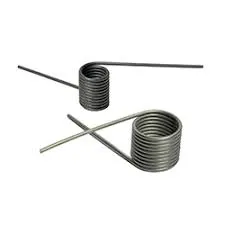
- Mobile Phone
- +8613931874955
- sales@cntcmetal.com
Connecting Brick and Stud Walls for Enhanced Structural Integrity and Design Flexibility
The Importance of Brick Ties in Stud Wall Construction
In modern construction, the combination of diverse materials has enabled architects and builders to create robust, energy-efficient structures that stand the test of time. One specific instance of this versatility can be seen in the use of brick ties in stud wall applications. Brick ties, or brick anchors, are essential components that facilitate the connection between brick veneer and the underlying wall structure. This article details the significance of brick ties, their installation, and the reasons why they are critical to the integrity of stud walls.
Understanding Brick Ties
Brick ties are typically made from galvanized steel or stainless steel to resist corrosion and are designed to ensure that the brick veneer remains securely attached to the stud wall beneath it. Their primary function is to provide lateral support, especially during high winds or seismic activities, ensuring that the brick does not separate from the frame of the building. This connection not only enhances structural stability but also contributes to the overall aesthetic of the building, allowing for a visually appealing façade without compromising safety.
Installation of Brick Ties
The installation of brick ties is a critical step in the construction process of a stud wall with brick veneer. Typically, ties should be placed at regular intervals — usually every 16 to 24 inches vertically and at every brick row horizontally. The ties should be anchored into the framing studs, providing a solid attachment point that allows for movement while maintaining the integrity of both the brick and the wall structure.
Moreover, proper installation requires that the ties be embedded into the mortar joints of the brick veneer. This not only assists in weight distribution but also allows for the natural expansion and contraction of materials, which can occur due to temperature fluctuations. The use of a minimum of adjustable ties is advisable, particularly in situations where the wall may experience significant movement; adjustable ties can accommodate changes in position without compromising their function.
The Role of Brick Ties in Structural Integrity
brick ties to stud wall

Brick ties serve as a crucial element in maintaining the structural integrity of a wall assembly that incorporates both brick and frame construction. Without proper ties, the brickwork can become loose, leading to increased risks of cracking and detachment over time. This is particularly vital in regions prone to severe weather events, as the forces exerted can easily displace unanchored brick.
Another key aspect is that brick ties help mitigate the risk of moisture penetration. A wall that lacks adequate ties may create gaps where water can enter, leading to mold growth and deterioration of both the brick and wooden components of the stud wall. Brick ties, when installed correctly, ensure that water drainage systems work effectively, allowing moisture to escape rather than accumulate within the wall assembly.
Energy Efficiency and Aesthetic Appeal
In addition to their structural benefits, brick ties can contribute to the energy efficiency of the building. A well-anchored brick veneer adds an extra layer of insulation, helping to reduce heating and cooling costs. Moreover, the combination of brick aesthetics with stud wall interiors gives design flexibility to architects, enabling them to meet both functional and aesthetic requirements while maintaining energy efficiency.
Furthermore, the appeal of brick veneer contributes positively to the overall market value of a property. Buildings that display quality craftsmanship, particularly in their exterior finishes, attract prospective buyers and tenants alike, showcasing a strong understanding of building practices and standards.
Conclusion
Brick ties are an integral part of constructing stud walls with brick veneer, providing the necessary support and stability that ensures safety, durability, and design integrity. Their role cannot be overstated — from enhancing structural strength to serving aesthetic purposes and improving energy efficiency, brick ties are essential in the modern construction landscape. As the industry continues to evolve, understanding and correctly implementing these ties will be crucial for creating high-quality, long-lasting structures.
share:
-
Understanding Wall Ties: Types and ImportanceNewsApr.28,2025
-
Top Products for Your Yard and Signage NeedsNewsApr.28,2025
-
The World of SpringsNewsApr.28,2025
-
Masonry Accessories: Essential for Building Strong FoundationsNewsApr.28,2025
-
Fencing Solutions for Every NeedNewsApr.28,2025
-
A Comprehensive Guide to Iron Wire for Your Construction NeedsNewsApr.28,2025
-
The Versatility of Wire Tension SpringsNewsApr.16,2025



















